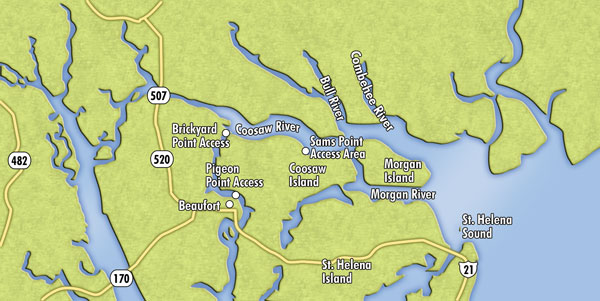
Fly-fishing on the Coosaw River flats is quite rewarding this time of year.
Early on a pleasant, late-summer morning, Capt. Tyler Gault and his daughter, Sherri Hightower, left a grocery-store parking lot on Ladies Island. A tailing tide was rolling in, and the flooded grass flats along the Coosaw River were waiting.
Down a couple of dirt roads and around a couple of bends, the Coosaw finally appeared, breaking over its banks and flooding the massive grass flat beyond the end of the road.
Gault and Hightower stepped out onto the firm flat, which was littered with short sprigs of spartina grass. Fiddler crabs scattered in every direction, their panic obvious, their rush to get things in order before the feed started. Soon, redfish would be searching the flat, looking for anything edible, and fiddlers were no doubt at the top of the list.
For the redfish, there might as well have been a neon sign blinking “Today’s Special, All You Can Eat Fiddlers”
Gault led the way, charging through the grass, knocking snails from their perches on the slim blades, headed for an area where the flat that would flood first. Sure enough, as he got closer, something working its way from the marshy edge of the river to the harder bottom of the flat became visible.
They had just arrived at their destination when, in water barely covering their ankles, a tail broke the surface just within casting distance, with the oh-so-distinctive spot that gives redfish its more-descriptive local name “spot-tail bass” clearly visible.
Hightower eased forward, stopping when she was about 40 feet from the feeding fish, then worked her fly rod to get enough line into the air, finally landing the fly softly in front of the fish.
The fly of choice was a CG Crafty Shrimp, which basically looked like something a redfish might eat — they have a fondness for little critters. The fly was attached to about nine feet of 20-pound test leader and a floating fly line spooled on an 8-weight Echo rod-and-reel combo.
Hightower twitched the fly once and yelled, “Fish on!”
On the business end of her fly rod was a redfish of about 20 inches. The slack line at her feet ran through her fingers, and soon, the fish was on the reel, making the drag sing.
After a short fight on the long rod, Gault landed the fish for his daughter. Big smiles abounded, and there was little doubt that fly-fishing for tailing reds might be one of the most-enjoyable ways to spend a morning.
If fly-fishing for reds seems complicated, it is, but it’s worth it. Find the right flat, find a feeding fish, use the right fly, make the proper presentation, and hook, play and land a fish on a 9-foot rod as flimsy as a half-cooked noodle.
After a quick release, the pair was on the move again, looking for more tailing targets. With fish on the flats, Gault doesn’t waste any time.
“During the cold winter months, redfish will school up and can be found all together, but as the water warms in early summer, they become more solitary and will naturally be spread apart searching for a meal,” Gault said. “You have to hunt for redfish when on the flooded flats. You have a limited amount of time to find a feeding fish, and standing in one place just doesn’t cut it.”
Time is limited because redfish won’t be on the flats for more than a few hours at a time. Lowcountry fishermen need to study tide charts to recognize the best times for catching tailing reds. For Coosaw River reds, Gault prefers tides that range from seven to almost eight feet, and he likes to be get to the flats two hours before high tide. When tides are even higher, fish still feed on the flats, but the window for finding them is much smaller. The best tides tend to coincide when fish are most active — from late summer to early fall.
When searching for a good flat, Gault looks for certain key features that tell him which flats will hold fish. First, he wants shorter, more sparse spartina grass that indicates a hard bottom suitable for wading. Next, he looks for items on the redfish’s menu: fiddlers, shrimp and baitfish. To attract fish, a flat has to hold a lot of bait, and the more food sources available, the more fish will visit to feed.
Next, Gault looks for small creeks or ditches that dissect the flat like veins, places where reds will feel comfortable entering and leaving a flat.
“They like to work their way in slowly, and not all at once,” Gault said. “When waiting on the tide to roll in, the reds will enter via the marshy edges surrounding these veins first and can often be seen in less than six inches of water when working onto the flat.”
The time when fish first enter a flat is the time Gault looks forward to the most.
“I think the fish are the hungriest and jazzed up when they first get onto the flat. They are looking for a quick meal, and almost all of their attention is on feeding,” he said. “As the water rises and the redfish have managed to add to the contents of their stomach, they’re still there, but not so intently feeding. They will head down and tail up in one place only for a moment before disappearing, only to reappear 20 feet away, making hooking up on fly difficult, but not impossible; it requires a little luck as well as skill.”
Gault said reds will stay on the flats as long as they’re holding water.
“I have seen reds literally scraping their bellies before exiting the flats, almost always near the same place they entered from,” he said.

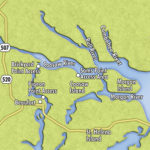
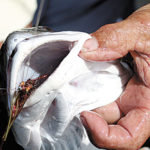
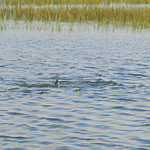
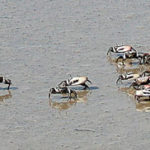
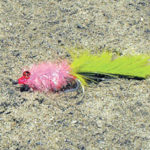
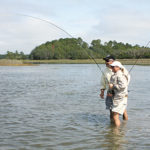


Be the first to comment